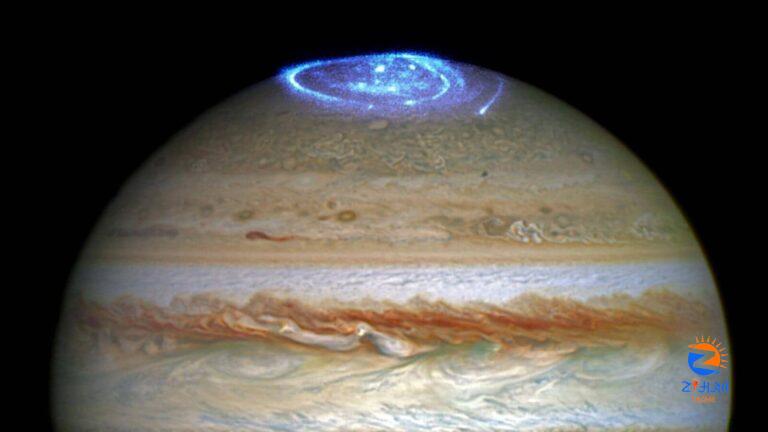
[ad_1]
NASA images: The National Aeronautics and Space Administration (NASA) has released 5 never seen before images of Jupiter and its moon. The stunning photos captured by JunoCam offers us a glimpse into the universe’s marvellous visuals.
The US space agency regularly releases images depicting cosmic wonders of the world, including celestial bodies, planets, nebula, moon, star clusters, interacting galaxies, black holes and more. Let’s have a look at what is in store about the fifth planet from the Sun.
Citizen scientist Jackie Branc is the man behind this stunning picture of Jupiter made by using raw JunoCam data. The description to this image states, “This view of Jupiter was captured by the JunoCam instrument aboard NASA’s Juno spacecraft during the mission’s 62nd close flyby of the giant planet on June 13, 2024.”
JunoCam aboard NASA’s Juno spacecraft captured this breath-taking image of Jupiter’s moon, Europa, during the mission’s close flyby on September 29 two years ago. The side of the Europa facing Jupiter is visible in this image. According to NASA Europa’s surface is crisscrossed by fractures, ridges, and bands, which have erased terrain older than about 90 million years. This ultimate depiction of Europa was developed by citizen scientist Björn Jónsson.
“During its 61st close flyby of Jupiter on May 12, 2024, NASA’s Juno spacecraft captured this color-enhanced view of the giant planet’s northern hemisphere,” NASA’s description to the image states. In the folded filamentary region of Jupiter, clouds and cyclonic storms can be seen. By applying digital processing techniques, citizen scientist Gary Eason developed this image using JunoCam raw data.
Describing the volcanic plumes that can be seen rising above the horizon of Jupiter’s moon Io, the US space agency said mission scientists believe that the plumes were emitted either by two vents from one giant volcano, or two volcanoes near each other. The image captured on February 3 this year shows plumes from a distance of about 3,800 kilometres. Citizen scientist Andrea Luck developed this image using raw JunoCam data.
The JunoCam image captured on April 9 this year Jupiter’s moon Io. This marks the first. This image is special as it is the first ever image of the moon’s south polar region. According to the US space agency, the image was developed by citizen scientist Thomas Thomopoulos by applying further processing to an image created by another citizen scientist, Gerald Eichstädt.
[ad_2]
I really enjoyed reading this post. Your clear and concise writing style makes complex topics easy to understand. The depth of your analysis is impressive, and the practical tips you provided are very helpful. Thank you for taking the time to write this.
Comments are closed.